The Baltic Sea is bordered by the Scandinavian Peninsula, the northern coasts of central and eastern Europe, and the Danish Islands. Some folks may not imagine that this inland sea as home to many species of sharks, but this temperate-cold sea actually hosts a variety of shark life. Typically, these sharks migrate to these colder waters during the warmest months.
In this guide, we’ll explore seven awesome sharks of the Baltic Sea. Read on to learn more!
1. Porbeagle Shark
The porbeagle shark (Lamna nasus) resides in cold-temperate waters in coastal and oceanic regions. This highly migratory species belongs to the mackerel (aka white), or Lamnidae, family of sharks. The porbeagle shares the Lamna genus with one other species, the salmon shark.
At maturity, the porbeagle shark is capable of reaching likely capable of reaching 5-12 feet in length and over 500 pounds. Estimates of length are uncertain, however, as some size reports may have been based off other mackerel shark species. Shark biologists estimate the shark can live about 30-40 years, but the species is currently listed as critically endangered.
As juveniles, porbeagles feed primarily on squid. Once they reach maturity, their diet shifts to bony fish such as mackerels, sardines, herrings, and small dogfish sharks.
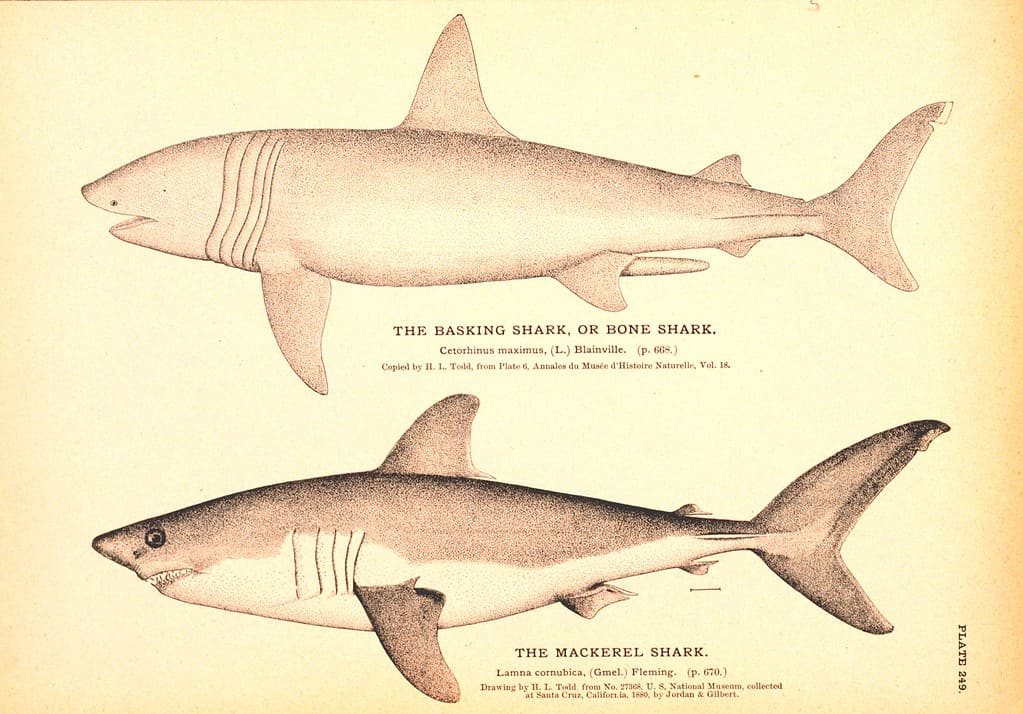
As depicted in this historical illustration, the outdated common name of the porbeagle was the mackerel shark.
©NOAA’s Historic Fisheries Collection, Public domain, via Wikimedia Commons – License
2. Spurdog Shark
Also known as the spiny dogfish, the spurdog shark (Squalus acanthias) is a migratory species that spends part of its life in the cold waters of the Baltic Sea. This species is part of the dogfish, or Squalidae, family of sharks. These small, slender sharks can grow up to 5.5 feet long and weigh up to about 21 pounds. Despite its diminutive size, the spurdog shark is one of the slowest-growing, latest-maturing, and longest-lived of all shark species. While the exact maximum age of these sharks is unknown, researchers have confirmed they can live at least 75 years. Due to overfishing pressures and their slow reproduction cycle, spurdog sharks are critically endangered in the Northeast Atlantic.
As a bottom-dwelling species, the spurdog shark can dive up to around 4,000 feet to feed on the ocean floor. Like other bottom-dwellers, they tend to hunt by camouflaging themselves in the mud and ambushing prey. These sharks of the Baltic Sea are opportunistic feeders and enjoy a wide range of food. Some of their primary prey include fish, crustaceans, invertebrates, and even sea anemones.

The spurdog shark is a bottom-dwelling species capable of living at least 75 years.
©Joern_k/Shutterstock.com
3. Basking Shark
The basking shark (Cetorhinus maximus) holds the title of the second-largest fish species in the world. The only larger fish species than the basking shark is the whale shark. Like whale sharks, Basking sharks eat microscopic zooplankton through filter feeding. This shark belongs to the Cetorhinidae family of massive, filter-feeding mackerel sharks. Today, the basking shark is the only extant member in its family as the other two species of basking sharks are extinct.
This incredible animal can grow up to 40 feet in length, weigh over 10,000 pounds, and live up to 50 years. Like many species of mackerel sharks, they are highly migratory, often passing through the cold waters of the Baltic Sea during the summer months. While their body shape resembles predatory white sharks, they exclusively passively feed on microscopic critters. One defining feature of basking sharks is their enormous gill slits. Bristle-like gill rakers in the slits can filter up to 130,000 gallons of seawater per hour, catching millions of zooplankton in the process.
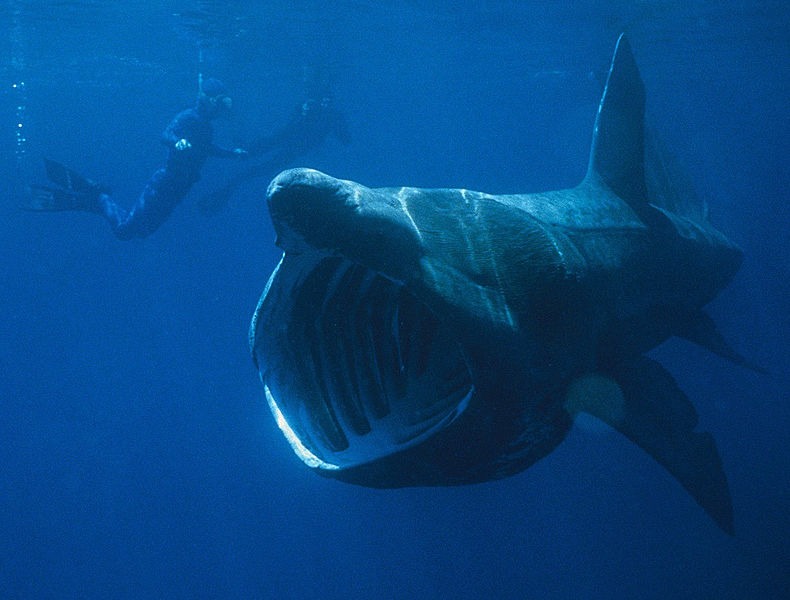
The basking shark is the second-largest fish species in the world.
©Chris Gotschalk / Public Domain, from Wikimedia Commons, the free media repository – License
4. Small-Spotted Catshark
The small-spotted catshark (Scyliorhinus canicula) is a lovely, small, speckled, and slender shark in the Scyliorhinidae family. This family of catsharks represents the largest of all shark families with around 160 species categorized across 17 genera. Sharks in this family typically grow between 1-5 feet long. The small-spotted catshark can grow up to 39 inches long and weighs up to only 3 pounds. They have a lifespan of about 12 years.
In the Baltic Sea, the small-spotted catshark lives in shallow waters, especially along continental shelves. They tend to be a warm-temperate species, so they usually only reside in the Baltic Sea during the warmest part of the year. They hunt along the seafloor, eating fish, shrimp, crabs, invertebrates, mollusks, and sea cucumbers.

The small-spotted catshark has a lifespan of about 12 years.
©iStock.com/atese
5. Blue Shark
The blue shark (Prionace glauca) is an open ocean fish that inhabits tropical, temperate, and cold oceans, including the Baltic Sea. This lovely-colored shark belongs to the Carcharhinidae family, along with about 50 other species, including the world’s freshwater sharks. As the common name suggests, this shark features strikingly blue coloration. Along the back is dark blue, the sides and pectoral fins are bright blue, and the underside is white. Across most of their range, the blue shark is labeled as near threatened due to high levels of commercial fishing and shark finning.
This species prefers to spend most of its time far from coastal waters. They travel near the surface and as deep as about 1,150 feet. While slender, this shark can reach up to 13 feet in length. With their sleek body design, these open ocean predators can reach burst speeds of about 40 mph. With this speed, they can target a range of prey with high burst speeds such as tuna and young swordfish. While the maximum lifespan for the blue shark is not yet known, this slender open-ocean shark can live at least 15 years.
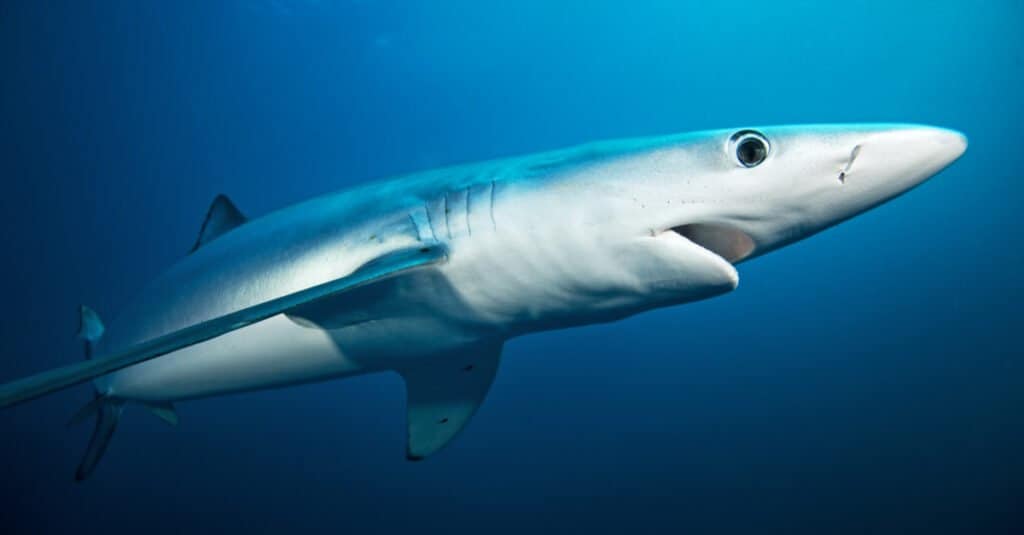
The blue shark is one of the fastest sharks in the ocean, capable of reaching bursts speeds of about 40 mph.
©Martin Prochazkacz/Shutterstock.com
6. Bluntnose Sixgill Shark
The bluntnose sixgill shark (Hexanchus griseus) is a species residing in deep waters, rarely found in waters less than 300 feet deep. Three species of sixgill sharks exist today and are considered some of the most prehistoric sharks alive, with ancestral roots tracing back at least 200 million years. As their common name suggests, one of the distinguishing features of sixgill sharks is that they have six gills, in comparison to other modern sharks with five gills.
These massive deep-water sharks can grow over 18 feet long and weigh up to about 1,500 pounds. Shark biologists currently estimate that bluntnose sixgill sharks can live up to 80 years. This species feeds nocturnally, targeting bony and cartilaginous fish such as rays, flounder, cod, and hagfish.
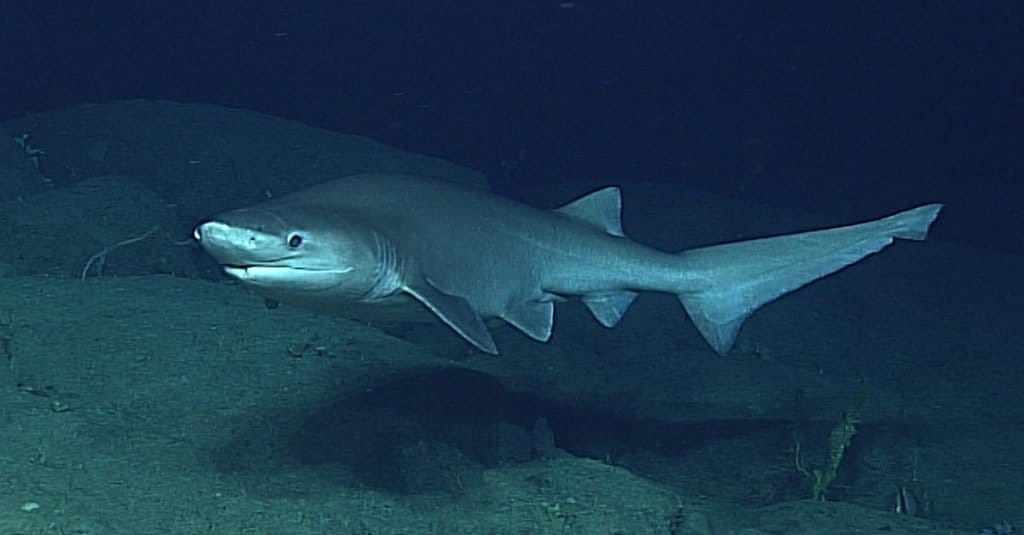
The bluntnose sixgill shark is a nocturnal hunter of deep waters.
©NOAA Ocean Explorer from USA / CC BY-SA 2.0 – License
7. Smooth Hammerhead Shark
Occasionally, the smooth hammerhead shark (Sphyrna zygaena) cruises through the cool waters of the Baltic Sea. These unique sharks are part of the hammerhead, or Sphyrnidae, family of flattened hammer or shovel-shaped headed sharks. This highly migratory species exists worldwide in coastal temperate-tropical waters. In the warm months, some members of this species travel through the Baltic Sea.
The smooth hammerhead is the second-largest of its kind, ranked only behind the great hammerhead shark. The smooth hammerhead can reach lengths of 20 feet long and weigh over 900 pounds. Their expected lifespan is 20-30 years. The IUCN’s Red List of Threatened Species considers the smooth hammerhead shark vulnerable due to targeted commercial fishing or bycatch.
This species primarily spends its time in shallow waters measuring less than 65 feet deep. There, they hunt opportunistically on a range of schooling fish, skates, stingrays, smaller sharks, shrimp, crustaceans, and cephalopods.
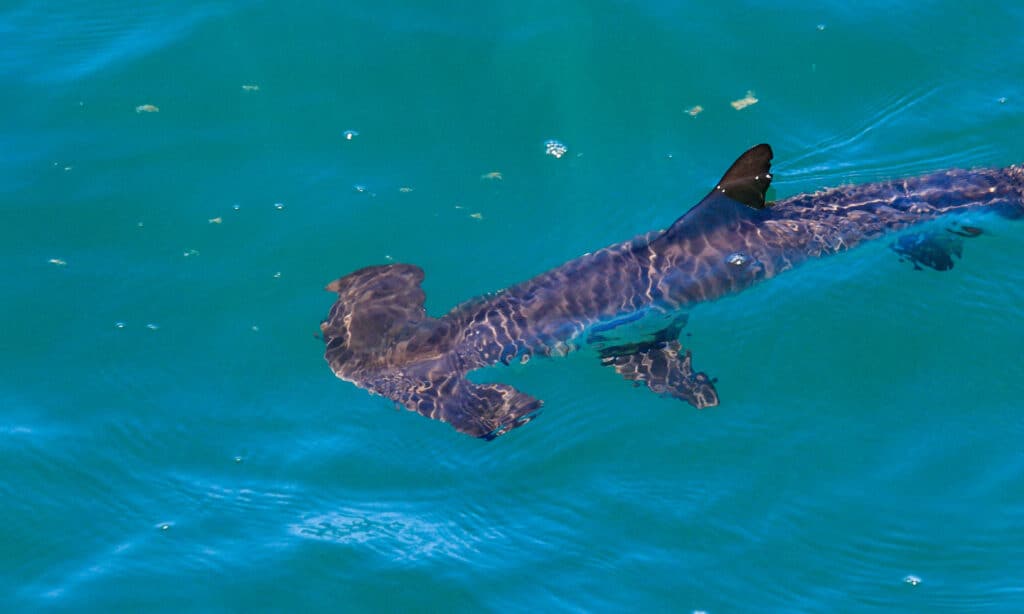
Smooth
hammerhead sharks
primarily live in shallow coastal waters.
©iStock.com/Alessandro De Maddalena
The photo featured at the top of this post is © iStock.com/atese
Thank you for reading! Have some feedback for us? Contact the AZ Animals editorial team.






